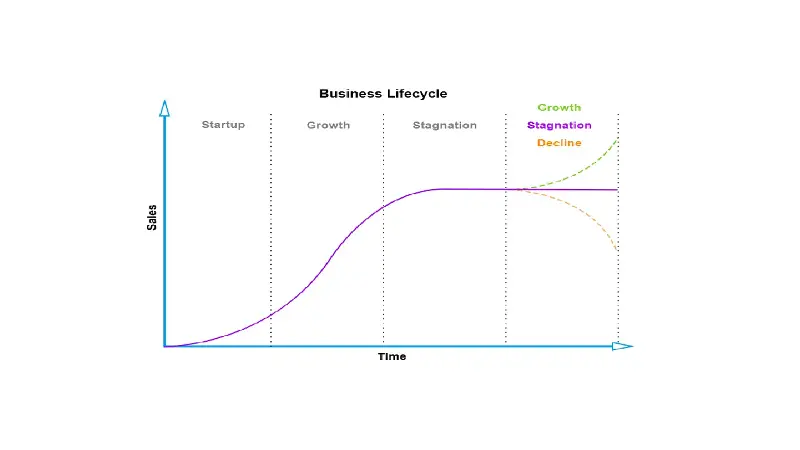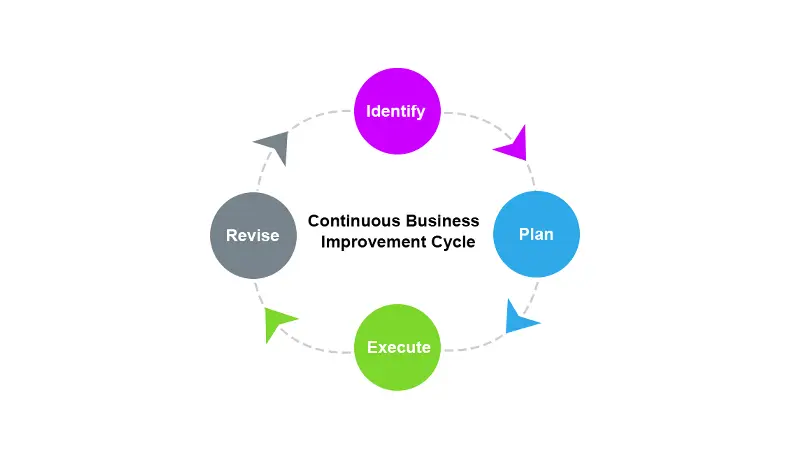Growing Pains
Growing any type of business is a mixture of determination, hard work and sometimes a bit of fortuitous luck. However, sustaining that growth consistently can be even harder. Factors such as increased costs, more competition, economic factors and are all potential headwinds that can slow you down.
It's common for both start-ups and established businesses to plateau at some point. Constant year on year 3-digit percentage growth just doesn't exist in the real world – however often business gurus or the media pedal rare success stories like Xero, Zendesk or Google.
Most plateaus in business growth appear over an extended period of time. This maybe a rapid slowdown in orders over several weeks, or as in SaaS businesses a gradual squeeze in monthly revenue growth as customer churns rates become realized. As growth targets fall behind it can be frustrating as you scrabble to analyze and implement a strategy to kick start your growth.

So, when you hit the inevitable rut, how do you adapt and implement processes that you get back on track? Will huge sweeping changes across the entire organization produce dramatic results or is it time to diversify the business.
Measuring success
It's almost universally accepted that business success is measured by the size of the accomplishment. We then use this as the basis for KPIs, goals and targets and strive to achieve something that sets the social media waves a buzz with lavish praises for the magnitude of success.
Whether it's the size of growth or even market share we believe that unless it's substantial it's not successful.
This measure of success is almost pre-programmed into us, but it can also hamper growth - contributing to the stagnation, as we get frustrated and deflated at constantly missing goals.
However, setting different KPIs and monitoring smaller more achievable targets can not only help businesses out of the stagnation, but also help avoid the slow down in the first place.
What do we mean by continuous business improvement
Setting large goals and targets and over ambitious outcomes comes as a side effect of business creation. Business plans, our imagination, the personal investment in terms of finance and time, not to mention the need for investment in the early stages drives us to exaggerate our goals. I mean which financial institution is going to invest in your business idea based on small targets or unimpressive goals.

Continuous business improvement challenges traditional thinking and focuses on measuring more things, over longer periods of time with smaller targets.
The idea being that if you can improve lots of the smaller things by even a single percent then they add up to overall larger gains.
The power of small gains
Making small gains isn't earth shattering - it's definitely not going to grant you Social Media adoration and you are almost definitely not going to notice any immediate changes to the bottom line.
But, over time those ever so small gains – even just 1% can build up to something far more impressive.
Take gym subscriptions for example. If the accounts team focused on improving their referral program from current members by just a single percent every month, by targeting specific members who are more likely to endorse the facilities or are incentivized more to attract others. Then over the course of a year the membership is already a substantially bigger pool for identifying and targeting specific targets. It goes without saying that the KPIs across many departments would need to be integrated to achieve the goal. Behaviors and everyday tasks would also need to align to these actionable KPIs.
How to accurately work out Month on Month growth rates:
In SaaS business models, monitoring and measuring lots of different components and aiming for small percentage gains is already widely proven to be an effective strategy for growing the subscription base.
Using KPIs to measure small gains
Key Performance Indicators are a great way to set goals aligned to the businesses strategic objectives. Typically, KPIs are set by business or departmental heads to monitor progress towards those objectives. And as such they too typically are loaded with large targets and unobtainable goals.
The issue thankfully doesn't lie with the KPI as a tool. With a bit of adjustment, they can be used to measure performance of tiny gains alongside some process and behavioral changes.
The idea that monitoring more and more often flies in the face of traditional performance management teachings. With the sheer volume of data available it's possible to micro monitor almost every aspect of a business from the number of paper clips to the average purchase time - and everything in between.
So where should you focus your measuring? Start backwards. If the overall goal is to increase revenue, map out all the processes that directly affect revenue. For example, in a SaaS environment you might take 'Trial Conversions' as your overall goal, with it broken down into its supporting components such as 'Customer Interactions', 'Email Responses' and 'Support SLA times'. With each metric monitored monthly with the aim of small gains in the number of email responses or small reductions in the time it takes to answer support queries.
And remember, this strategy takes time. Patience and commitment will be key to success. You may not notice any initial change, however over time those larger financial KPIs will start to move in the right direction.
Best practice for continuous business improvement
Using KPIs to help measure continuous business improvement is just one of the steps you can take to avoid plateauing, or helping you to lift your business out of the stagnation period. Here are some additional best practice ideas worth considering.
Do more of what already works
Seems obvious, but if you're already tracking your performance in various areas of your business and they are performing well, for example if certain products sell better than others, concentrate on promoting these products in different channels more frequently.
Make progress visible
Even small progress steps can be great motivational drivers for teams and departments. Once these areas get accustomed to small regular wins it generates a more positive and focused attitude to attain future gains.
Use Tools and software to measure and monitor progress
It goes without saying that the right KPI tools and software can be used to provider greater insights into business processes and performance. They can help visualize large amounts of data into simple understandable graphs and charts that are great for communicating performance across teams and departments.
This software can also be used by management and business owners to make better decisions based on historic trends and real time data, instead of using gut feel or instinct.

by Stuart Kinsey
Stuart Kinsey writes on Key Performance Indicators, Dashboards, Marketing, and Business Strategy. He is a co-founder of SimpleKPI and has worked in creative and analytical services for over 25 years. He believes embracing KPIs and visualizing performance is essential for any organization to thrive and grow.
